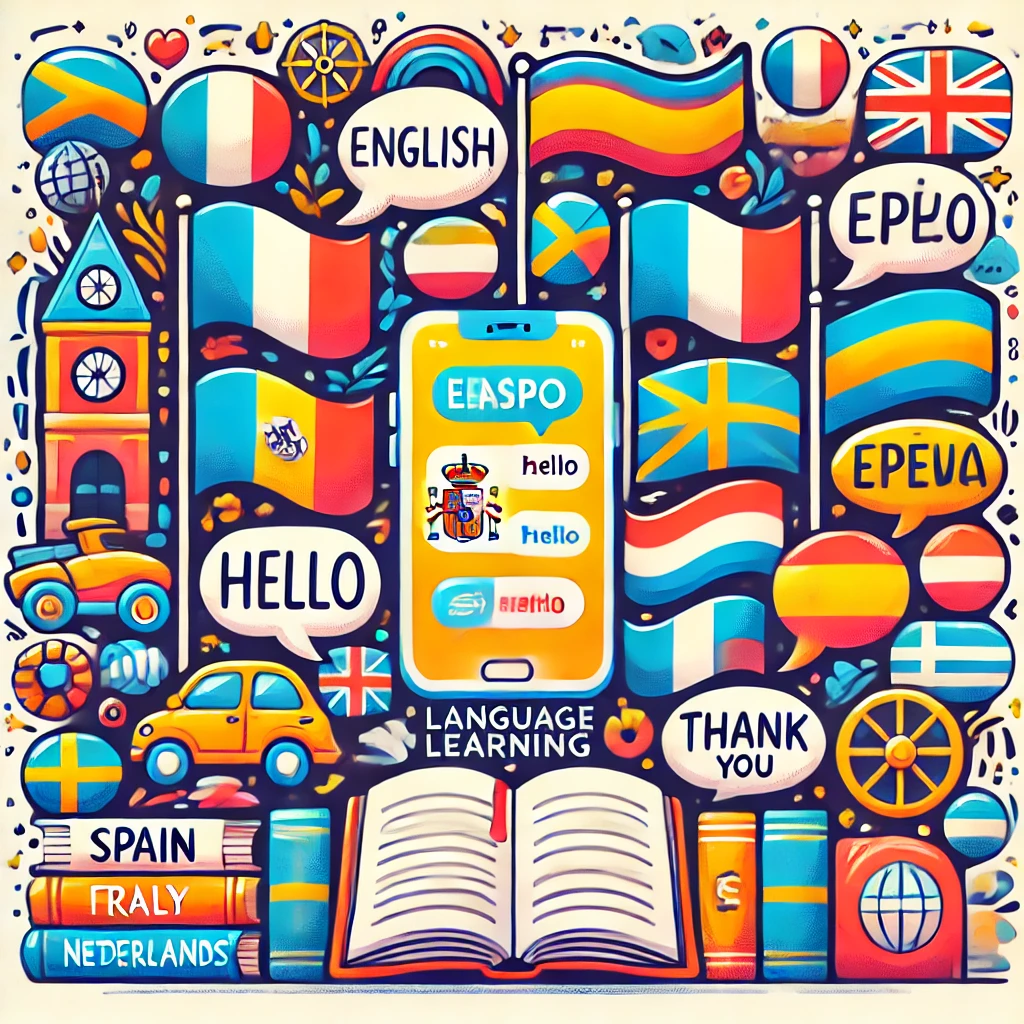What is the Easiest Language to Learn? Factors and Popular Choices for Learners
Determining the easiest language to learn depends on various factors, such as the learner’s native language, exposure to similar languages, and personal learning preferences. Some languages are widely regarded as easier for English speakers due to their shared vocabulary, familiar grammar structures, or simpler pronunciations. In this post, we’ll explore factors that affect language learning ease, common “easy” languages, and tips for choosing the right language for your goals.
Factors That Influence Language Learning Ease
When deciding which language is easiest to learn, consider these factors:
1. Linguistic Similarity
Languages that are similar to one’s native language are generally easier to learn. English speakers, for example, may find other Germanic languages like Dutch and Swedish easier to learn than non-Germanic languages, as they share similar vocabulary and sentence structures.
2. Pronunciation and Phonetics
Languages with sounds that closely resemble those in the learner’s native language are often easier to pronounce and remember. Languages that use phonetic writing systems, where words are pronounced as they are spelled, are typically simpler for beginners.
3. Grammar Complexity
Some languages have simpler grammatical structures, with fewer conjugations, cases, or gender distinctions. For example, languages without complex verb conjugations or case systems can be less daunting for new learners.
4. Learning Resources and Exposure
Availability of resources—such as language apps, courses, and media—can make a language easier to learn. Popular languages like Spanish and French have extensive learning resources, making them more accessible for self-study.
Popular Languages Considered Easy to Learn
For native English speakers, these languages are often cited as some of the easiest to learn:
1. Spanish
Spanish is one of the most popular choices for English speakers because it has a straightforward grammar system, phonetic spelling, and relatively simple verb conjugations. Spanish shares many cognates (similar words) with English, such as “animal,” “color,” and “familiar,” which makes vocabulary acquisition easier. Additionally, Spanish pronunciation is consistent, and it’s widely spoken in many countries, providing ample resources and opportunities for practice.
2. French
French is another Romance language that shares Latin roots with English, making vocabulary easier to learn. Although French pronunciation and spelling can be tricky at first, English speakers often find that learning cognates (like “important,” “menu,” or “information”) speeds up comprehension. French grammar has gendered nouns and verb conjugations, but the regularity of these rules helps learners adapt over time.
3. Dutch
Dutch is a Germanic language, like English, meaning it has many similar words and a familiar sentence structure. Its grammar is relatively simple, with only two noun genders (compared to German’s three), and Dutch vocabulary is closely related to English. Words like “apple” (appel), “blue” (blauw), and “fish” (vis) make Dutch vocabulary easier to pick up. Pronunciation is generally accessible for English speakers, although some vowel sounds may require practice.
4. Italian
Italian is phonetically straightforward, and its spelling closely matches pronunciation, which simplifies reading and speaking. Italian has a regular verb conjugation pattern and a vocabulary that shares many cognates with English (e.g., “family” – famiglia, “university” – università). Italian’s rhythmic and melodic pronunciation is often enjoyable for learners and makes comprehension easier.
5. Swedish
Swedish is another Germanic language that has a significant number of similarities with English, especially in vocabulary and sentence structure. Swedish grammar is simpler than many other European languages, with only two genders and no complex verb conjugations. Pronunciation can be melodic, and the language follows relatively predictable spelling rules. Swedish’s similarity to English, coupled with Sweden’s abundant learning resources and media, makes it an accessible language.
6. Portuguese
Portuguese, especially Brazilian Portuguese, is a Romance language that shares a close relationship with Spanish, so if you’ve studied Spanish, learning Portuguese can be even easier. Portuguese grammar and vocabulary are accessible, with many cognates shared with English. Portuguese pronunciation differs from Spanish, but the phonetic patterns are consistent.
Language Learning Tips for Beginners
Regardless of the language you choose, here are some tips to make learning easier:
1. Start with High-Frequency Vocabulary
Focus on high-frequency words and phrases that will help you communicate in everyday situations. Learning essential phrases like “hello,” “thank you,” “where is…?” and “how much?” gives you practical language skills quickly.
2. Immerse Yourself in Media
Listening to music, watching TV shows, and following social media in your target language can enhance listening skills and expose you to common phrases and expressions. Spanish, French, and Portuguese, for example, offer a wealth of content online.
3. Practice Consistently
Consistency is key to language learning. Short, daily study sessions can be more effective than long sessions once a week. Apps like Duolingo, Babbel, and Memrise offer structured daily lessons that reinforce vocabulary and grammar.
4. Speak and Use the Language
Practicing speaking with native speakers or language partners helps reinforce learning and builds confidence. Apps like HelloTalk and italki connect you with native speakers, offering opportunities to practice in real conversations.
5. Leverage Cognates and Loanwords
Identify cognates and loanwords (words borrowed from another language) in your target language. For example, many English-Spanish cognates share similar spellings and meanings, such as “perfecto” (perfect) and “nación” (nation).
Conclusion
The easiest language to learn varies depending on your background, goals, and exposure to similar languages. For English speakers, Spanish, French, Dutch, Italian, Swedish, and Portuguese are among the most accessible options due to similarities in vocabulary, grammar, and the availability of resources. Whatever language you choose, remember that consistency, immersion, and regular practice will make the journey smoother and more enjoyable.






